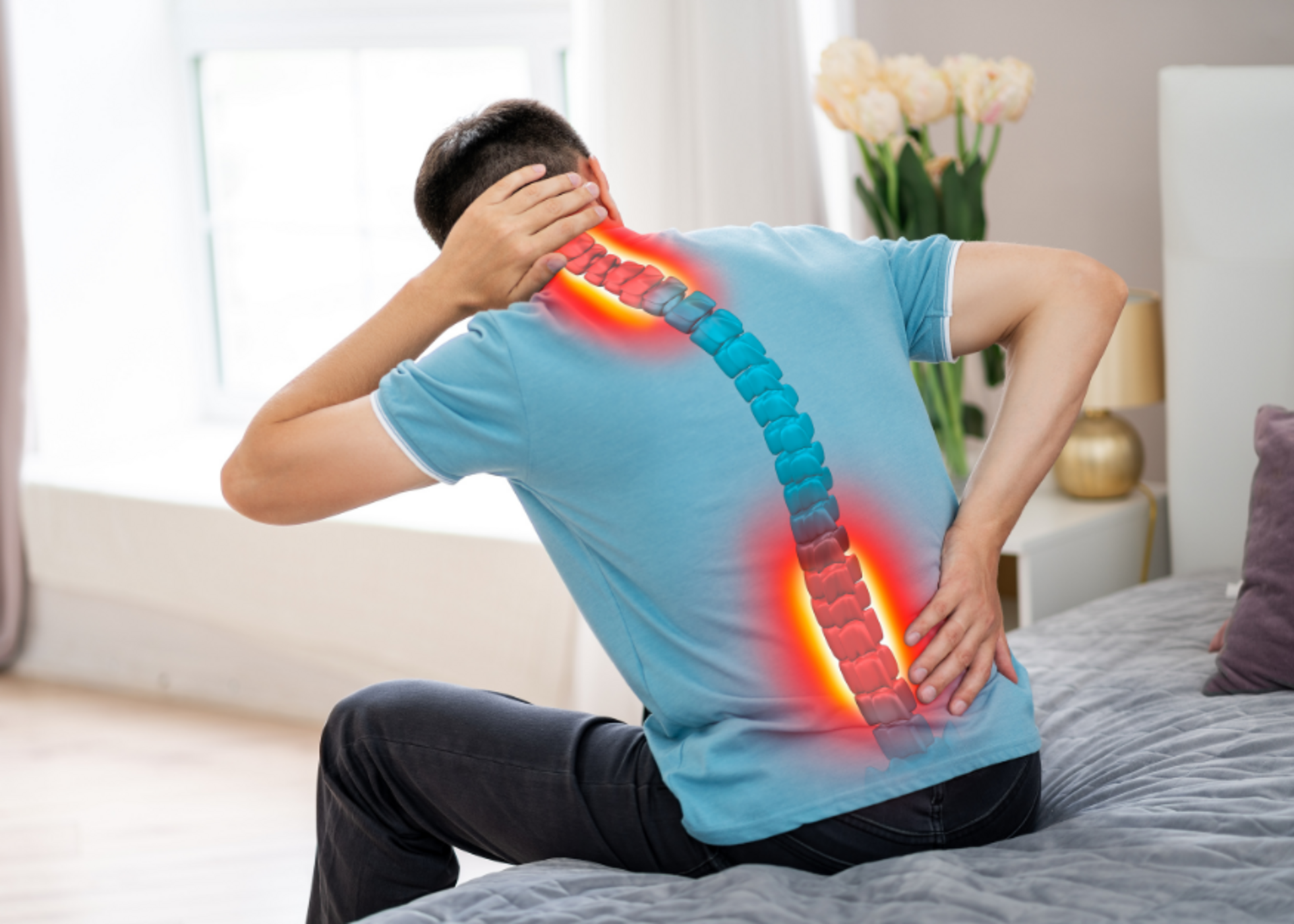Cervical spondylosis, also known as age-related wear and tear of the cervical spine, is a common condition affecting the neck region. As we age, the structures of the neck—including discs, bones, and joints—undergo changes that can lead to discomfort, stiffness, and pain. While cervical spondylosis is often associated with the natural aging process, understanding its causes, symptoms, and treatment options can help individuals manage and alleviate its impact on their daily lives.
What is Cervical Spondylosis?
Cervical spondylosis refers to the degeneration or deterioration of the discs and joints in the cervical spine (the neck area). The condition is characterized by the gradual wear and tear of the cartilage, the formation of bone spurs, and the dehydration of the intervertebral discs, which act as shock absorbers between the vertebrae.
This process is usually a result of the natural aging process, but other factors such as injury, improper posture, and lifestyle habits can accelerate it. While cervical spondylosis typically develops in individuals over the age of 40, it can occur earlier in some people due to genetics or environmental factors.
Causes of Cervical Spondylosis
While aging is the primary cause, several other factors can contribute to the development of cervical spondylosis:
- Aging: As we age, the intervertebral discs lose their hydration, leading to disc shrinkage and reduced cushioning. The vertebrae can also form bone spurs in response to the degenerative changes.
- Herniated Discs: When the cushioning discs between the vertebrae bulge or rupture, they can put pressure on the nerves in the neck, leading to pain and discomfort.
- Injury or Trauma: Previous neck injuries or accidents, including whiplash, can contribute to the degeneration of the cervical spine.
- Poor Posture: Spending long hours hunched over desks or looking down at smartphones can strain the neck muscles and joints, leading to early degeneration.
- Genetics: Some people may be genetically predisposed to developing cervical spondylosis at an earlier age due to inherited joint and bone conditions.
Symptoms of Cervical Spondylosis
The symptoms of cervical spondylosis vary from mild to severe, and some individuals may remain asymptomatic for years. However, common symptoms include:
- Neck Pain and Stiffness: Persistent pain or stiffness in the neck is the most common symptom. The discomfort may increase after long periods of sitting, standing, or sleeping in a particular position.
- Headaches: Tension-type headaches that start from the neck and radiate to the back of the head can be a symptom of cervical spondylosis.
- Numbness or Tingling in Arms or Hands: Pressure on the nerves from degenerated discs or bone spurs can cause numbness or tingling sensations in the arms, hands, or fingers.
- Weakness in Arms or Hands: As cervical spondylosis progresses, muscle weakness can develop, particularly in the hands or arms.
- Loss of Balance or Coordination: In some cases, if the spinal cord is compressed, individuals may experience difficulty with balance or coordination.
Diagnosing Cervical Spondylosis
To diagnose cervical spondylosis, a thorough medical history and physical examination are essential. During the exam, your doctor may assess your range of motion, strength, and reflexes to determine the extent of the condition.
In some cases, imaging tests such as X-rays, MRIs, or CT scans may be ordered to visualize the bones, discs, and nerves of the cervical spine. These images help determine the degree of degeneration and whether nerve compression is present.
Treatment Options for Cervical Spondylosis
The treatment for cervical spondylosis varies depending on the severity of the condition and the symptoms. Most people can manage cervical spondylosis with conservative treatments, but in more severe cases, surgical intervention may be necessary.
Non-Surgical Treatment Options:
- Physical Therapy: Targeted exercises and stretches prescribed by a physical therapist can help alleviate pain, improve flexibility, and strengthen the muscles supporting the neck.
- Medications: Over-the-counter pain relievers like ibuprofen or acetaminophen can provide relief from pain and inflammation. In some cases, muscle relaxants or corticosteroid injections may be recommended for more intense pain.
- Heat and Cold Therapy: Applying a hot or cold compress to the neck can reduce inflammation and provide temporary pain relief.
- Lifestyle Modifications: Maintaining a proper posture, taking regular breaks from sitting, and adjusting your workstation ergonomically can prevent further strain on the cervical spine.
- Traction: In some cases, cervical traction devices may be used to gently stretch the neck and relieve pressure on the spinal discs and nerves.
- Surgical Treatment Options: If conservative treatments fail to relieve symptoms or if nerve compression is causing severe pain, numbness, or weakness, surgery may be considered. The two most common surgical procedures for cervical spondylosis are:
- Discectomy: This procedure involves removing the damaged disc that is causing nerve compression.
- Spinal Fusion: In more severe cases, the surgeon may recommend spinal fusion to stabilize the spine by fusing two or more vertebrae together.
Preventing Cervical Spondylosis
While aging is inevitable, adopting a healthy lifestyle and proper posture can help reduce the risk of developing cervical spondylosis or minimize its severity:
- Practice good posture, especially when sitting or using a computer.
- Engage in regular physical activity to strengthen the muscles around the neck and spine.
- Avoid prolonged periods of neck strain, such as looking down at your phone or hunching over a desk.
- Use proper sleeping positions to avoid unnecessary neck stress.
Cervical spondylosis is a common and manageable condition that can significantly affect your quality of life. By understanding its causes, symptoms, and treatment options, you can take proactive steps toward managing the condition. If you're experiencing neck pain or related symptoms, don't hesitate to consult Dr. Shardul Soman, a trusted Consultant Orthopedic Spine Surgeon in Karvenagar, Pune. With personalized care and expert treatment, you can regain mobility and reduce the discomfort caused by cervical spondylosis.
Read More:Advantages of Endoscopic Spine Surgery
